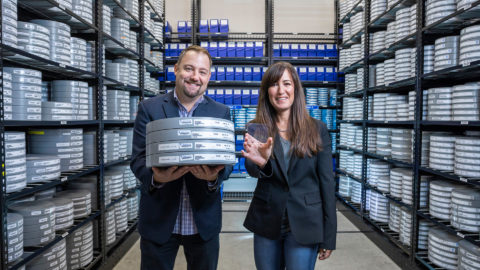IT Solutions: MIT is exploring phones that put themselves together
The university’s Self-Assembly Lab is living up to its name
We have seen a tiny chair that can assemble itself from MIT, but now the lab responsible for that adorable experiment has their eye on a much more complicated project: self-assembling cellphones. Specifically, MIT’s Self-Assembly Lab is looking at how putting together a handful of components in a rotating tumbler could come together as a complete cellphone. It’s a hard concept to grasp in words, so check out a video of the concept in action below.
Skylar Tibbits, who co-runs the lab, says he was originally inspired by MIT’s DIY cellphone project. That idea involved using $100 to $200 worth of parts to build a fairly simple dumbphone on your own. Tibbits took that concept even further to figure out how to build a functioning phone without human or robotic help. At this point, his team has managed to get six components to shape into two separate phones.
Naturally, there is a lot to consider when designing the self-assembling experiment. The tumbler being used by the MIT team has to move fast enough to juggle the parts around, but not fast enough to actually break them. The components also need to connect at the right points and stay together securely. For now, MIT is relying on magnets to bring the right parts together.
The finished product, which looks like a prototype for a 90’s-era cellphone, is undoubtedly rough. But the fact that it can actually come together and turn on (there’s no word on calling capability yet) is impressive. Self-assembling devices won’t do much to save manufacturing jobs, Tibbits says, but it’s one way companies can automate and lower the cost of production.
For more information and a personalized IT Solutions business offer, please contact us.
Source: www.engadget.com



